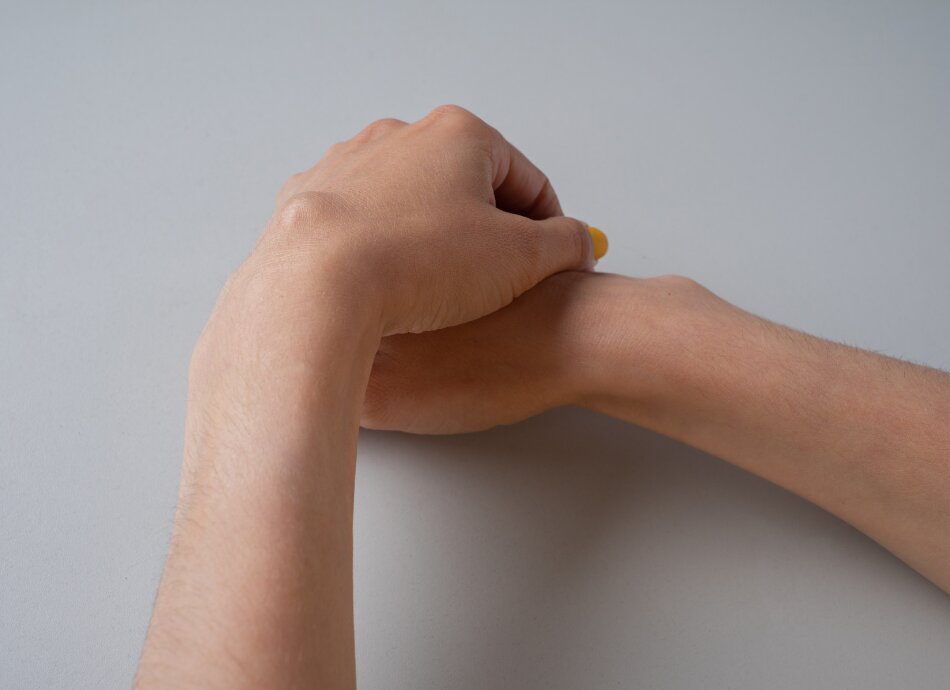The exact cause of a ganglion is unclear. However, it seems to be due to leakage of fluid called synovial fluid from nearby joints or tendons.
Low or no data? Visit zero.govt.nz, scroll down the page then click on our logo to return to our site and browse for free.
Ganglion
Also known as ganglion cyst
Key points about ganglions
- A ganglion is a small fluid-filled swelling, most often attached to a joint or tendon in your wrist, hands or fingers.
- A ganglion is usually harmless but can be removed if it causes pain or discomfort or restricts your joint movements.
- A ganglion grows very slowly and does not spread to other parts of your body.
- In most cases, the cause of a ganglion is unknown.
- Usually no test is needed to diagnose a ganglion.
- Your healthcare provider will only recommend treatment if a ganglion causes symptoms.

A ganglion appears as a round smooth lump or swelling under your skin. The size can range from a pea (small) to a plum (large). If it exerts pressure on nearby structures such as a nerve, it can cause:
- pain
- discomfort in the surrounding areas
- restriction of movement of nearby joints.
Your doctor will diagnose a ganglion by taking a history and examine the swelling. Usually no test is needed to diagnose a ganglion, unless your doctor thinks the swelling may be due to other causes.
No treatment is needed if a ganglion doesn't cause any symptoms. In some cases, the swelling will resolve by itself. Using a splint or soft wrist support as well as avoiding weight-bearing on nearby joints can help ease the discomfort. Your doctor may also refer you for hand therapy if you have difficulty carrying out daily activities.
If a ganglion causes pain or discomfort and restricts movement of your joints, a ganglion can be removed. There are two methods for removal:
- bursting the ganglion and sucking out the fluid (aspiration)
- cutting out the ganglion by surgery (excision).
Cutting out the ganglion by surgery offers the best chance of curing it. However, the public system does not routinely offer surgery to everyone with a ganglion, especially if you want to remove for cosmetic reasons only.
Your doctor or surgeon will discuss the best treatment options for you, depending on your medical and surgical history as well as your personal circumstances.
Up to 50% of ganglions will resolve on their own within 6 years without treatment. In some cases, the ganglion can recur after surgery has been done.
The following links provide further information about ganglion. Be aware that websites from other countries may have information that differs from New Zealand recommendations.
What is a ganglion cyst?(external link) HealthInfo Canterbury, NZ
Ganglion cyst(external link) NHS, UK
Ganglion(external link) Patient Info, UK
Surgery to remove a ganglion cyst(external link) NHS Foundation Trust, UK
References
- Ganglia(external link) Auckland HealthPathways, NZ
- What is a ganglion cyst?(external link) HealthInfo Canterbury, NZ
- Ganglion cyst(external link) NHS, UK
- Ganglion(external link) Patient Info, UK
- Surgery to remove a ganglion cyst(external link) NHS Foundation Trust, UK
Credits: Healthify editorial team. Healthify is brought to you by Health Navigator Charitable Trust.
Reviewed by: Miranda Buhler
Last reviewed:
Page last updated:





